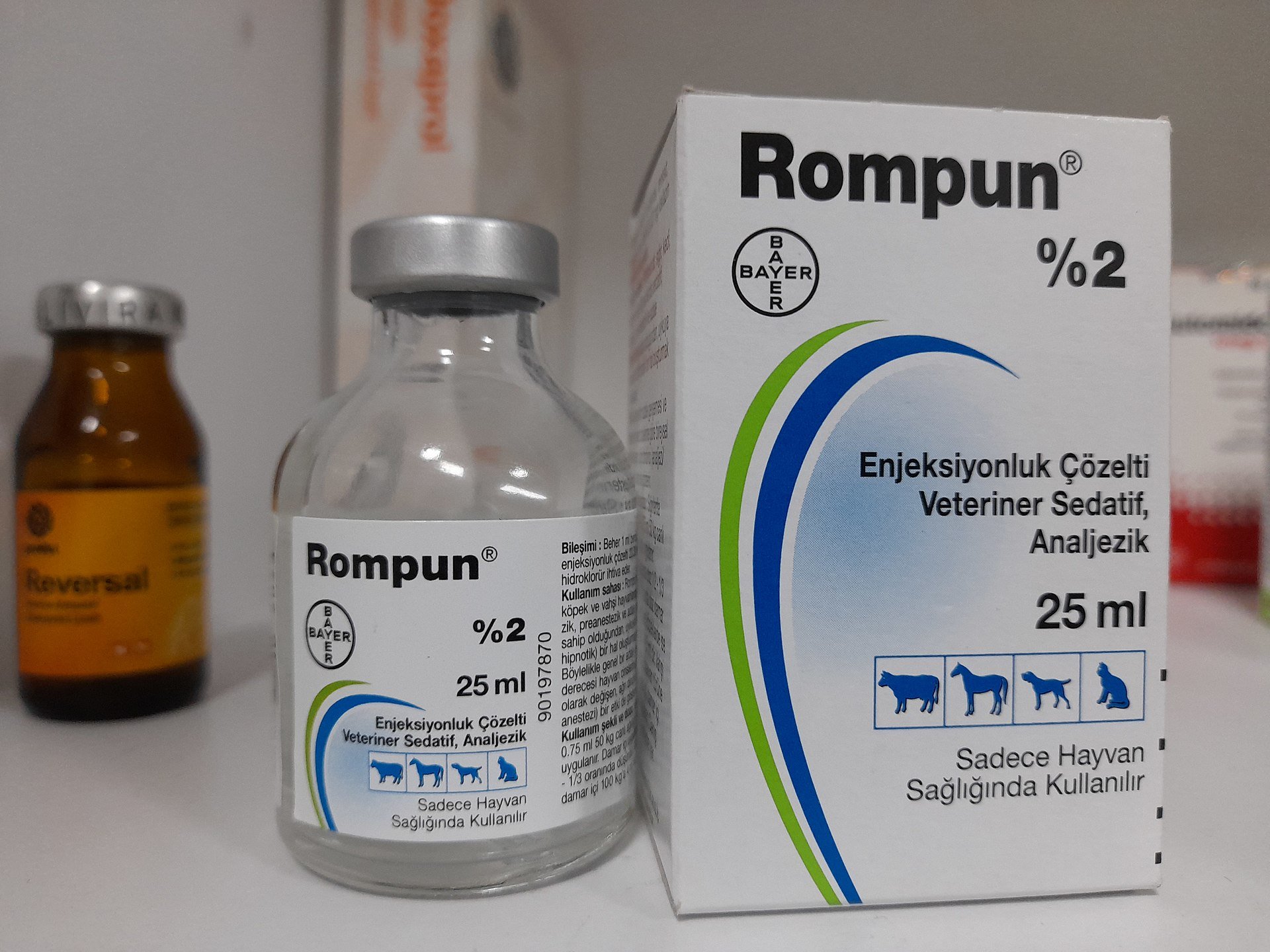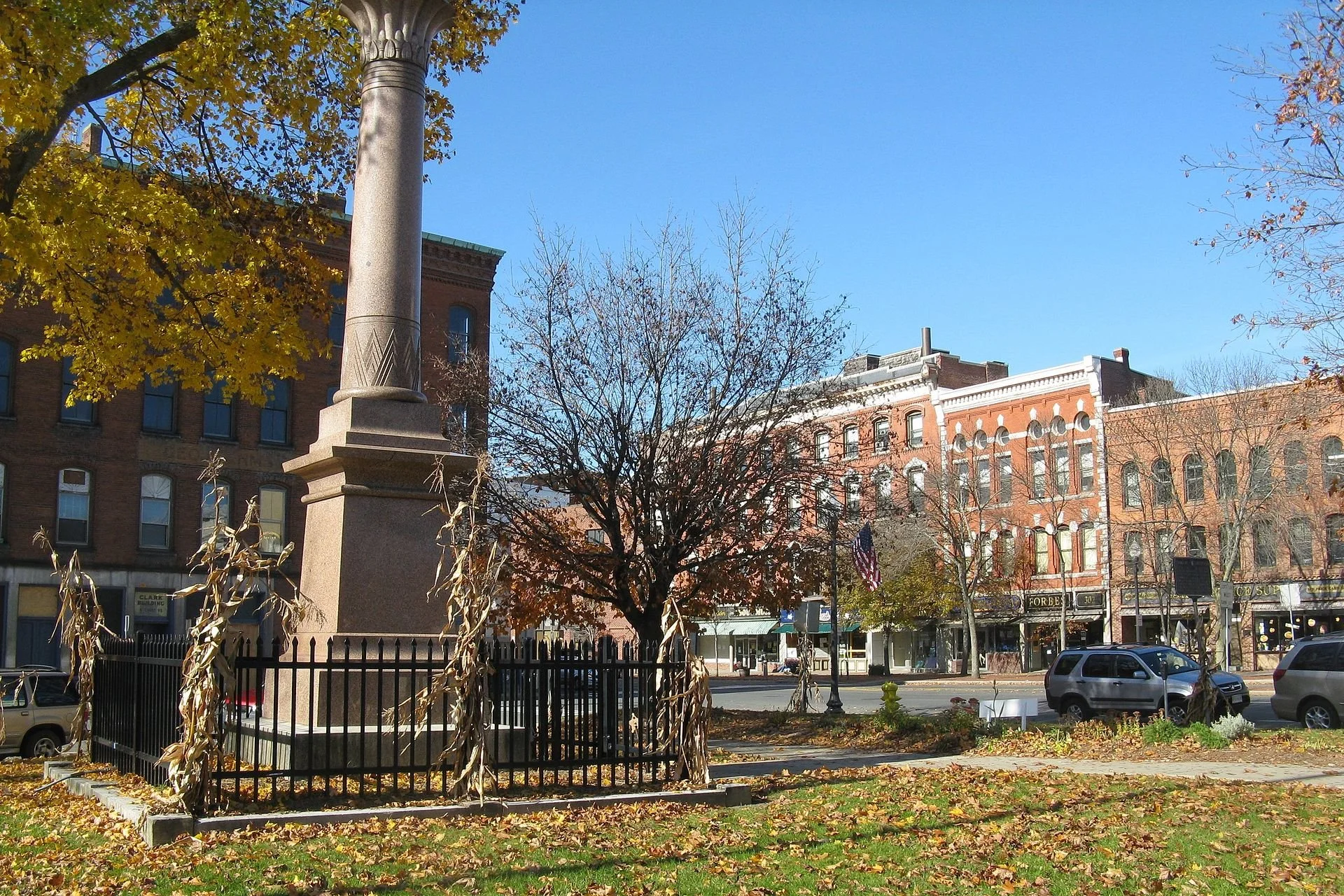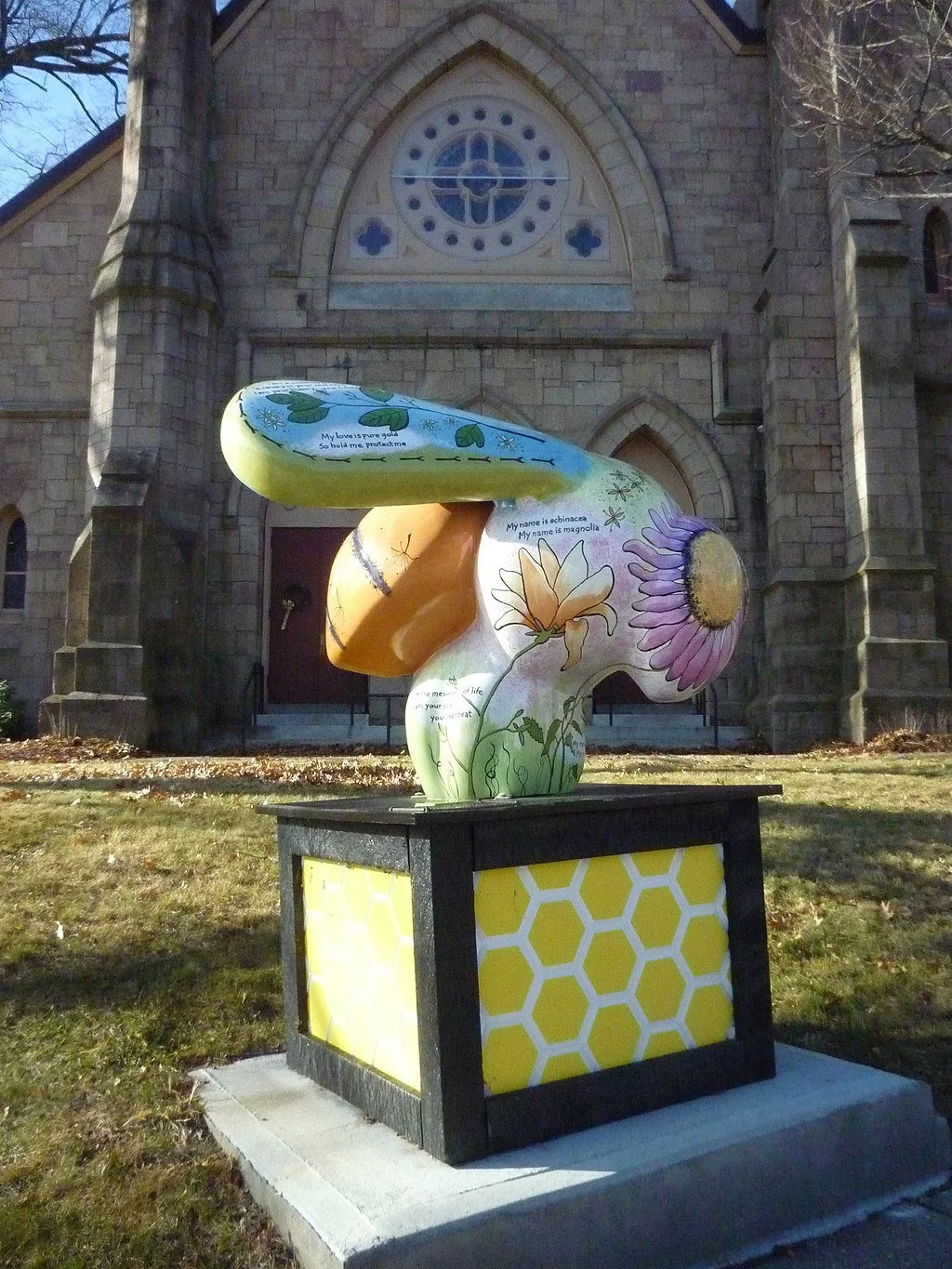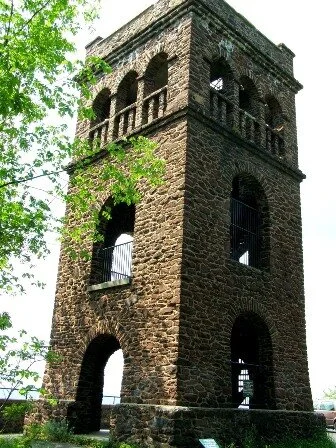
Martha Bebinger: Dangerous tranquilizer on the street in Mass. and elsewhere
As a veterinary anesthetic, xylazine is administered once for intended effect before surgical procedures (trade name: Rompun)
— Photo by Zemxer
The Civil War Memorial on Court Square, in Greenfield.
— Photo by John Phelan
GREENFIELD, Mass.
Approaching a van that distributes supplies for safer drug use here, a man named Kyle noticed an alert about xylazine.
“Xylazine?” he asked, sounding out the unfamiliar word. “Tell me more.”
A street-outreach team from Tapestry Health Systems delivered what’s becoming a routine warning. Xylazine is an animal tranquilizer. It’s not approved for humans but is showing up in about half the drug samples that Tapestry Health tests in the rolling hills of western Massachusetts. It’s appearing mostly in the illegal fentanyl supply but also in cocaine.
“The past week, we’ve all been just racking our brains — like, ‘What is going on?’” Kyle said. “Because if we cook it up and we smoke it, we’re falling asleep after.”
Kyle’s deep sleep could also have been triggered by fentanyl, but Kyle said one of his buddies used a test strip to check for the opioid and none was detected.
Xylazine, which is also known as “tranq” or “tranq dope,” surged first in some areas of Puerto Rico and then in Philadelphia, where it was found in 91% of opioid samples in the most recent reporting period. Data from January to mid-June shows that xylazine was in 28% of drug samples tested by the Massachusetts Drug Supply Data Stream, a state-funded network of community drug-checking and advisory groups that uses mass spectrometers to let people know what’s in bags or pills purchased on the street.
Whatever its path into the drug supply, the presence of xylazine is triggering warnings in Massachusetts and beyond for many reasons.
As Xylazine Use Rises, So Do Overdoses
Perhaps the biggest question is whether xylazine has played a role in the recent increase in overdose deaths in the U.S. In a study of 10 cities and states, xylazine was detected in fewer than 1% of overdose deaths in 2015 but in 6.7% in 2020, a year the U.S. set a record for overdose deaths. The record was broken again in 2021, which had more than 107,000 deaths. The study does not claim xylazine is behind the increase in fatalities, but study co-author Chelsea Shover said it may have contributed. Xylazine, a sedative, slows people’s breathing and heart rate and lowers their blood pressure, which can compound some effects of an opioid like fentanyl or heroin.
“If you have an opioid and a sedative, those two things are going to have stronger effects together,” said Shover, an epidemiologist at UCLA’s David Geffen School of Medicine.
In Greenfield, Tapestry Health is responding to more overdoses as more tests show the presence of xylazine. “It correlates with the rise, and it correlates with Narcan not being effective to reverse xylazine,” said Amy Davis, assistant director for rural harm-reduction operations at Tapestry. Narcan is a brand name of naloxone, an opioid overdose reversal medication.
“It’s scary to hear that there’s something new going around that could be stronger maybe than what I’ve had,” said May, a woman who stopped by Tapestry Health’s van. May said that she has a strong tolerance for fentanyl but that a few months ago, she started getting something that didn’t feel like fentanyl, something that “knocked me out before I could even put my stuff away.”
A Shifting Overdose Response
Davis and her colleagues are ramping up the safety messages: Never use alone, always start with a small dose, and always carry Narcan.
Davis is also changing the way they talk about drug overdoses. They begin by explaining that xylazine is not an opioid. Squirting naloxone into someone’s nose won’t reverse a deep xylazine sedation — the rescuer won’t see the dramatic awakening that is common when naloxone is administered to someone who has overdosed after using an opioid.
If someone has taken xylazine, the immediate goal is to make sure the person’s brain is getting oxygen. So Davis and others advise people to start rescue breathing after the first dose of Narcan. It may help restart the lungs even if the person doesn’t wake up.
“We don’t want to be focused on consciousness — we want to be focused on breathing,” Davis said.
Giving Narcan is still critical because xylazine is often mixed with fentanyl, and fentanyl is killing people.
“If you see anyone who you suspect has an overdose, please give Narcan,” said Dr. Bill Soares, an emergency room physician and the director of harm reduction services at Baystate Medical Center, in Springfield, Mass.
Soares said calling 911 is also critical, especially when someone has taken xylazine, “because if the person does not wake up as expected, they’re going to need more advanced care.”
‘Profound Sedation’ Worries Health Providers
Some people who use drugs say xylazine knocks them out for six to eight hours, raising concerns about the potential for serious injury during this “profound sedation,” said Dr. Laura Kehoe, medical director at Massachusetts General Hospital’s Substance Use Disorders Bridge Clinic.
Kehoe and other clinicians worry about patients who have been sedated by xylazine and are lying in the sun or snow, perhaps in an isolated area. In addition to exposure to the elements, they could be vulnerable to compartment syndrome from lying in one position for too long, or they could be attacked.
“We’re seeing people who’ve been sexually assaulted,” Kehoe said. “They’ll wake up and find that their pants are down or their clothes are missing, and they are completely unaware of what happened.”
In Greenfield, nurse Katy Robbins pulled up a photo from a patient seen in April as xylazine contamination soared. “We did sort of go, ‘Whoa, what is that?’” Robbins recalled, studying her phone. The image showed a wound like deep road rash, with an exposed tendon and a spreading infection.
Robbins and Tapestry Health, which runs behavioral and public health services in western Massachusetts, have created networks so clients can get same-day appointments with a local doctor or hospital to treat this type of injury. But getting people to go get their wounds seen is hard. “There’s so much stigma and shame around injection drug use,” Robbins said. “Often, people wait until they have a life-threatening infection.”
That may be one reason amputations are increasing for people who use drugs in Philadelphia. One theory is that decreased blood flow from xylazine keeps wounds from healing.
“We’re certainly seeing a lot more wounds, and we’re seeing some severe wounds,” said Dr. Joe D’Orazio, director of medical toxicology and addiction medicine at Temple University Hospital in Philadelphia. “Almost everybody is linking this to xylazine.”
Martha Bebinger is a correspondent for Boston-based WBUR
This article is part of a partnership that includes WBUR, NPR and KHN.
Bee Sculpture "My Name is Life" in front of the Second Congregational Church, in Court Square, Greenfield. Pleasure without drugs.
— Photo by Eleanor.Bel.Cher
'Round and round'
Poet's Seat Tower is a 1912 sandstone observation tower in Greenfield, Mass., named to honor a long tradition of poets being drawn to the spot, in particular, Frederick Goddard Tuckerman. By 1850, Tuckerman, in a journal entry, called it "Poet's Seat."
An earlier wooden tower was erected at the site in 1879. This first structure was built, along with a public drinking fountain and a road accessing the site, under the auspices of The Greenfield Rural Club.
Roll on, sad world! not Mercury or Mars
Could swifter speed, or slower, round the sun,
Than in this year of variance thou hast done
For me. Yet pain, fear, heart-break, woes, and wars
Have natural limit; from his dread eclipse
The swift sun hastens, and the night debars
The day, but to bring in the day more bright;
The flowers renew their odorous fellowships;
The moon runs round and round; the slow earth dips,
True to her poise, and lifts; the planet-stars
Roll and return from circle to ellipse;
The day is dull and soft, the eave-trough drips;
And yet I know the splendor of the light
Will break anon: look! where the gray is white!
“Roll on Sad World,’’ by Frederick Goddard Tuckerman (1821-1873), a poet, lawyer and amateur botanist and astronomer. Born in Boston, he spent his last decades in Greenfield, Mass.
View in 1917 of Greenfield from Poet’s Seat Tower
Settled and resettled
Greenfield from Poet's Seat Tower, 1917
"You go to towns in Massachusetts, Greenfield, first settled in 1686. Wouldn’t it be cool if it said, 'Greenfield. First settled c. 13,000 B.P. or approximately 13,000 Before the Present. Resettled.' Maybe we could say even, 'Resettled by whites,' Or, 'Resettled anyway, 1686.' It would have a different impact. And of course it would help explain why the town is called Greenfield, because it was a green field and the fields were left by Native people who had already been farming them.
-- James W. Loewen, historian and sociologist
Marker in downtown Greenfield.
For Greenfield storeowners, Amazon much tougher foe than Walmart
Greenfield in 1917, around its commercial heyday.
From Robert Whitcomb's "Digital Diary,'' in GoLocal24.com
'The Atlantic had a good article (“A Small Town Kept Walmart Out. Now It Faces Amazon,’’ March 2) about Greenfield, a town in western Massachusetts.
Greenfield has managed to keep big-box retailers out of town in order to preserve locally owned stores. But now local store owners and consumers who want to keep them are fighting a bigger enemy – Amazon. The behemoth online retailer offers a convenience that’s very difficult to compete against. Alana Semuels writes:
“Greenfield and other towns across New England are learning that while they might have been able to keep out big-box stores through zoning changes and old-fashioned advocacy, there’s not much they can do about consumers’ shift to e-commerce. They can’t physically keep out e-commerce stores—which don’t have a physical presence in towns that residents could push back against—and they certainly can’t restrict residents’ Internet access. ‘It’s one thing for me to try and fight over land use in the town I live in, or in somebody else's town,’ {local leading} big-box foe {Al} Norman told me, ‘But e-shopping creates a real problem for activists, because on some level, shopping online is a choice people make, and it’s hard to intrude yourself in that.”’
Beyond the demise of local business that keep much of their revenues in their area, there’s a hollowing out of local civil society as people have fewer opportunities to meet in local stores; there are fewer of them as more and more folks order more and more products from home or office. As the Internet society heads toward its fourth decade, we’ll need to find different ways to encourage locals to meet and to participate in their community other than, say, joining AA.
To read The Atlantic’s article, please hit this link:








